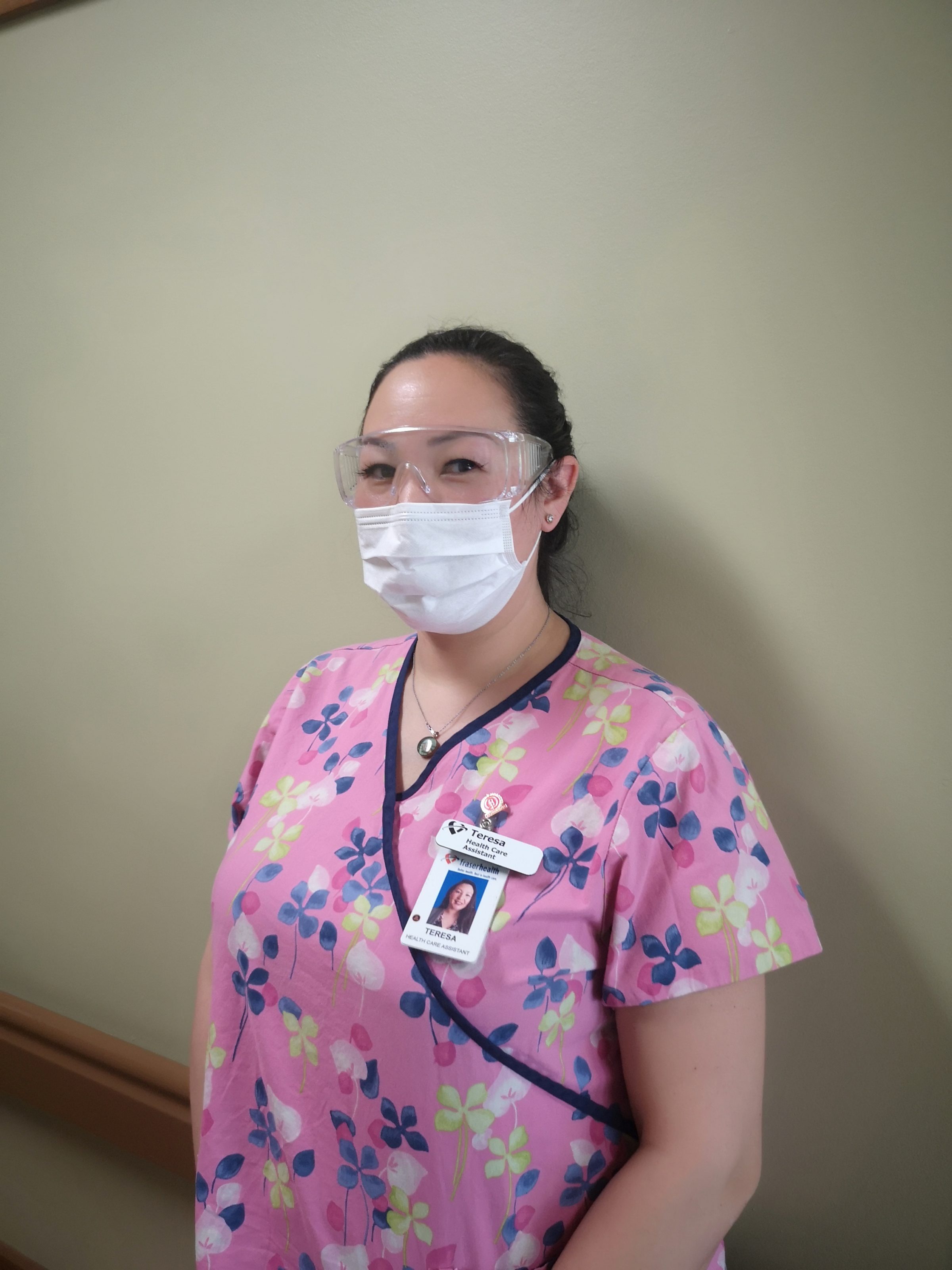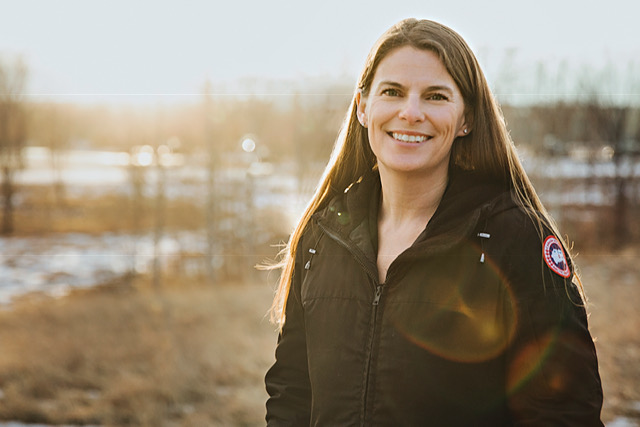Coast Salish health heroes fight at COVID-19 front line
Photo: Island Health’s Cowichan Valley medical health officer Dr. Shannon Waters, a member of Stz’uminus First Nation. Submitted photo.
By David P. Ball
As the province of B.C. prepared to allow a slight re-opening of some services and activities starting May 14, members of Coast Salish communities continue to serve on the frontlines of the health care battle to keep COVID-19 under control.
Several told the Sentinel they could feel the deep appreciation for their efforts caring for elders, the ill, and the vulnerable during an unprecedented pandemic in our lifetimes.
“These are very difficult circumstances we’re having to deal with right now,” said Dr. Shannon Waters, Island Health’s Cowichan Valley medical health officer, who is from Stz’uminus First Nation. “There are times I’m definitely overwhelmed, I will not deny that at all.”
Waters worked as a family doctor in Duncan, B.C., before returning to school for public health and preventive medicine. She was formerly senior medical health officer for the First Nations Health Authority.
She acknowledged the pandemic has been especially painful for the roughly 2,600 who contracted COVID-19 in B.C. and families of the more than 160 who died of the illness here, as of June 3 — but also seniors and chronically ill people isolated because of their infection risk, and even the stresses that social distancing has had on many families and individuals.
“Certain moments can feel really scary and overwhelming, but creating space for ourselves, we can get through those moments and know we’re here,” Waters said. “One of my teachings as a Coast Salish person is that Creator doesn’t give us anything we’re not ready for. We have the resiliency of our ancestors.”
She knows the economic shutdown and public health authorities’ advice to stay close to home and avoid crowds and close contact with others can put strain on anyone’s mental health.
“It’s hard for us to understand each other’s contexts when we’re going through this fear and overwhelm,” she said.
For her, going out on the land and seeing the new plant shoots growing with the season cleared her mind and put things in perspective.
“My spirit had been lifted,” she said, explaining she has kept her morale up dealing directly with the public health emergency by taking an hour-long walk on her territories every morning before her children wake.
“We got through hardships as a people,” Waters said. “These things happened before and our ancestors dealt with them, with our land supporting us.
“Huy tseep q’u (thank you) to our elders and our seniors — getting to that point in your life, you’ve lived through difficult times, and gained knowledge and grace in how to deal with those situations. They help create that backbone connecting us to our stories.”
Teresa Roe, from Musqueam Nation, has worked for a decade as a long-term care aid for seniors, currently in Langley facility. Her job usually involves starting at 6 a.m. bathing seniors and helping them get dressed and ready for breakfast. On days that she works the floor, she’ll also visit and spend time with residents — whether doing puzzles, or just learning about residents’ life stories.

Not being able to show them her smile because of extensive personal protective equipment, including medical masks and eye protection, has been particularly painful. Many were already isolated, even before all visits were banned.
One of Roe’s patients, she said, is 101 years old — meaning she was born during the 1918-1919 flu pandemic that killed up to an estimated 50 million, as World War I ended.
“Some of the things these seniors and elders have had to go through — they’ve seen a lot more than I have,” Roe told the Sentinel. “They’ve gone through at least one World War, and another huge pandemic.”
There have been months of “total lock down” in the long-term care home, though some visits have been able to happen with signs held up through the window glass to residents’ rooms.
“It’s hard for everybody, to see the families and how much it hurts them on their face,” Roe said.
Being Coast Salish reminds her of the importance of caring for elders, of caring for all one’s community members, and of being grateful — she’s grateful for being provided the personal protective equipment she and her coworkers need, and for all the public support unlike any she’s seen before. And she’s able to still connect with her parents using video chats, because her reserve is keeping all visitors out, so until COVID-19 eases, she can’t see her aunties, uncles or grandma.
Roe is also grateful there have been no COVID-19 cases in her facility, but one day a coworker felt ill and went home when she got shortness of breath, one of the virus’ most common symptoms (alongside fever and coughing). Thankfully the worker did not test positive for coronavirus, but it caused anxiety — and a reminder of the importance of following all the health protocols diligently.
“All of us got really anxious, really nervous,” she recalled. “If one single person comes in and infects one other person, our entire unit would be infected — that’s a scary thought.
“Thankfully we’ve had no COVID-19 here, and we have all the equipment we need to be safe. It’s so reassuring knowing that’s all there for us. All we can do is the best we can do. This is why we’re here. This is our job.”
The First Nations Health Authority’s chief medical officer Dr. Evan Adams — who is from Tla’amin First Nation — acknowledged that the two-metre physical distancing rule and advice to stay home has not been easy for many.
He emphasized that when health authorities ask people to try to stay home except for essential trips for groceries or health, that doesn’t mean locking yourself indoors. As the province gradually re-opens in phases, being safe in public spaces and outside will be more important than ever, too.
“Stay home kind of means your home including your outdoor home,” Adams said. “For Indigenous people, that includes your territory … You can be outdoors as long as you keep your physical distance from people.”
He agreed with Dr. Waters that being outdoors, at a distance from non-household members, helps with staying mentally healthy and well during an extremely stressful time for many.
“Not a lot of people have COVID-19 right now — a lot of the suffering people are experiencing is mental,” he said in the video. “I hear a lot of people saying they’re anxious, sleepless, concerned, they feel a lot of stress, they worry about their loved ones, and they feel helpless.
“Part of our work is to encourage people … We are strong, we will get through this, it will end.”
The Naut’sa mawt Tribal Council — publisher of the Salish Sea Sentinel — launched a COVID-19 taskforce drawn from its 11 member communities to co ordinate during the pandemic and its economic disruptions.
The tribal council said in a statement it’s “committed to working with our member nations to support them during this unprecedented time,” adding that despite “limited resources, each of our communities are doing the very best work that they can to minimize the spread of the virus, reduce panic and provide basic support needs.”
For Janet Moore, an elder from Halalt First Nation, the pandemic and its painful effects is a reminder to “keep praying” and caring for the community, especially those most vulnerable to catching the respiratory illness.
“Stay in your homes, keep away from others, and protect elders and people with severe health conditions,” Moore said, in a post on the Naut’sa mawt Tribal Council’s COVID-19 Task Group’s website.
The Naut’sa mawt Elders Council had also issued an early call to member nations asking them to postpone cultural activities and events, even funerals, until after the emergency passes — and for any communities running businesses to close their doors for now.
And perhaps most importantly, to take extra care to protect the elders but to ensure they are also not isolated during a distressing time.
“Protect your elders and loved ones with any health concerns by keeping your distance,” the council advised, “but do call them to check-in and see how they are doing.”
The Coast Salish communities declaring emergencies or choosing to close off their access roads to visitors are certainly not alone in the province. Some even set up roadblocks to control entry; others declared emergencies or self-isolation as a community.
Terry Teegee, B.C. Assembly of First Nations Regional Chief said many bands are “hyper-aware” of the higher risks of COVID-19 to Indigenous people. That’s led to communities with few entry roads especially to shut their borders; at least 50 declared official states of emergency, while even more — at least 80 — have declared community self-isolation.
“An outbreak in a community could be quite devastating, considering we have so many elders,” Teegee explained. “Many First Nations communities suffer from chronic diseases … many of which can be attributed to poverty and policies such as the Indian Act, and we also have chronic diseases like diabetes because of our change in diet.”
He said that levels of government should have done more to include First Nations in funding and health decisions, and in better informing them about where COVID-19 cases are nearby.
“Quite frankly we haven’t been part of the decision-making process,” he said. In the absence of more involvement, many are taking matters into their own hands as part of self-determination: “You can control those that enter the community and make sure your First Nation’s members are protected, and only let in essential services to the community,” he said. “Quite simply it’s easier to self-isolate as a whole than as individuals.”
According to Naut’sa mawt Tribal Council’s elders, however, physical distance should not mean being culturally or socially alone.
And that means not only looking out for and protecting elders in the community, but also realizing that their well-being is everyone’s well-being.
“Isolation can be lonely,” the Elders Council said in a statement, “so turning to your elders for guidance, support, and conversation may be helpful to get through these challenging times.”
For long-term care aid Roe, the difficult and stressful time we’re in has also revealed resilience — health providers looking out for each others’ health, and hearing the public’s cheering and noise-making for front line workers every evening at 7 p.m.; she said she turns off all sound in her home to listen.
It’s a lesson in resilience which she draws on from her own cultural background as Coast Salish, who have survived so many major historic calamities and events. She draws strength for the resilience she’s seen during COVID-19.
“It is heartwarming,” she mused. “A lesson I’ve learned from thinking about their resilience is people need to stay together, to be kind and help each other, be compassionate and caring.
“Remember everybody’s going through the same thing. We’ve just got to do what we need to do until this is over.”
If you need mental health support, the Indigenous-focused KUU-US Crisis Line Society is free to anyone who needs it at 1-800-588-8717. Naut’sa mawt Tribal Council’s Covid-19 Task Group can be reached at covid19@nautsamawt.com or via the NmTC offices toll-free at 1-888-382-7711.




